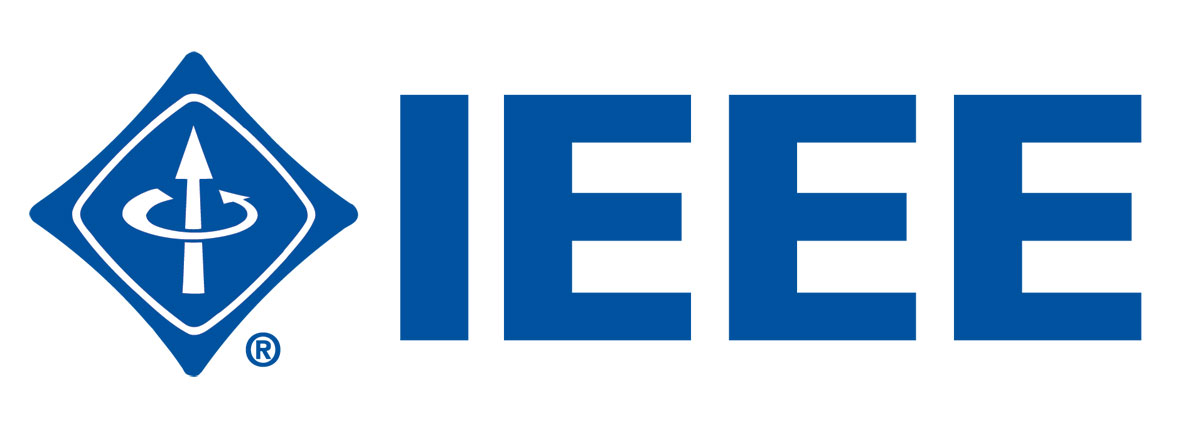Big Data technology has been one of key engines driving the new industrial revolution.
However, the majority of current Big Data research efforts have been devoted to single-modal
data analysis, which leads to a huge gap in performance when algorithms are carried out
separately. Although significant progress has been made, single-modal data is often
insufficient to derive accurate and robust models in many applications.
Multimodal is the most general form for information representation and delivery in a
real world. Using multimodal data is natural for humans to make accurate perceptions and
decisions. In fact, our digital world is multimodal, combining different modalities of data
such as text, audio, images, videos, animations, drawings, depth, 3D, biometrics,
interactive content, etc. Multimodal data analytics algorithms often outperform single modal
data analytics in many real-world problems.
Multi-sensor information fusion has also been a topic of great interest in industry
nowadays. In particular, such companies working on automotive, drone vision, surveillance or
robotics have grown exponentially. They are attempting to automate processes by using a wide
variety of control signals from various sources.
With the rapid development of Big Data technology and its remarkable applications to many
fields, multimodal Big Data is a timely topic. This workshop aims to generate momentum
around this topic of growing interest, and to encourage interdisciplinary interaction and
collaboration between Natural Language Processing (NLP), computer vision, audio
processing, machine
learning, multimedia, robotics, Human-Computer Interaction (HCI), cloud computing,
Internet of Things (IoT), and geospatial computing communities. It serves as a
forum to
bring together active researchers and practitioners from academia and industry to share
their recent advances in this promising area.
Topics
This is an open call for papers, which solicits original contributions considering recent findings in theory, methodologies, and applications in the field of multimodal Big Data. The list of topics includes, but not limited to:
- Multimodal data modeling
- Multimodal learning
- Cross-modal learning
- Multimodal big data analytics
- Multimodal big data infrastructure and management
- Multimodal scene understanding
- Multimodal data fusion and data representation
- Multimodal perception and interaction
- Multi-modal benchmark datasets and evaluations
- Multimodal information tracking, retrieval and identification
- Multimodal object detection, classification, recognition and segmentation
- Language and vision (e.g., image/video searching and captioning, visual question answering, visual scene understanding, etc.)
- Language and audio
- Audio and vision
- Biometrics and big data (e.g., face recognition, behavior recognition, eye retina and movement, palm vein and print, etc.)
- Multimodal applications (e.g., autonomous driving, robotic vision, cybersecurity, smart cities, industrial inspection, medical diagnosis, social media, arts, etc.)
Important Dates
Early submission and notification dates (Anywhere on Earth):
- Oct. 2, 2023: Submission of full papers (9-10 pages)
- Oct. 9, 2023: Submission of short papers (6 pages + 1- or 2-page references & appendices)
- Oct. 16, 2023: Submission of poster papers (3-4 pages) or extended abstracts (5 pages)
- Nov 1, 2023: Notification of paper acceptance
- Nov. 10, 2023: Submission of revisions of conditionally accepted papers/posters for the second round of review
Regular submission and notification dates (Anywhere on Earth):
- Oct. 16, 2023: Submission of full papers (9-10 pages)
- Oct. 23, 2023: short papers (6 pages + 1- or 2-page references & appendices)
- Oct. 30, 2023: Submission of poster papers (3-4 pages) or extended abstracts (5 pages)
- Nov 12, 2023: Notification of paper acceptance
- Nov. 19, 2023: Submission of revisions of conditionally accepted papers/posters for the second round of review
Please check accepted papers/posters. The acceptance notifications for the second-round review were sent out via email. Please incorporate review comments into your revisions and submit them by the deadline specified in your email for final review before camera-ready submission.
Final camera-ready submission dates (Anywhere on Earth):
- Nov. 22, 2023: Author registration required by the IEEE Big Data conference for paper publication
- Nov. 22, 2023: Workshop paper presentation type submssion
- Nov. 26, 2023: Camera-ready of accepted papers submission for the main conference
- Dec. 6, 2023: Pre-recorded video uploading to the main conference
- Dec. 16, 2023: IEEE Big Data 2023 - MMAI 2023 Workshop (Hybrid)
- Dec. 15-18, 2023: IEEE Big Data Conference in Italy
If you are participating virtually and are unable to give a live presentation on Zoom, you must attend the session to answer questions from the audience. Please upload your video (.mp4) to the main conference by Dec. 3rd.
Submission
Please follow IEEE
manuscript templates (Overleaf or US Letter) and IEEE
reference guide to format your paper, and then directly submit to
IEEE Big Data paper submission site.
The submissions must be in PDF format without author list (double-blind), written in
English, and formatted according to the
IEEE publication camera-ready style. All the paper review follows double-blind
peer review.
Accepted papers will be published in the IEEE Big Data 2023 proceedings.
Program Committee
Program Chair
Lindi Liao, George Mason University, USA
Program Committee Members
- Zhiqian Chen, Mississippi State University, USA
- Kaiqun Fu, South Dakota State University, USA
- Jesse Guessford, George Mason University, USA
- Maryam Heidari, George Mason University, USA
- Fanchun Jin, Google Inc., USA
- Ge Jin, Purdue University, USA
- Ashwin Kannan, Amazon, USA
- Kevin Lybarger, George Mason University, USA
- Emanuela Marasco, George Mason University, USA
- Nora McDonald, George Mason University, USA
- Abhimanyu Mukerji, Amazon, USA
- Chen Shen, Google Inc., USA
- Arpit Sood, Meta, USA
- Gregory Joseph Stein, George Mason University, USA
- Marcos Zampieri, George Mason University, USA
- Yanjia Zhang, Boston University, USA
Accepted Papers/Posters
Acceptance rate: 25% (full paper), 33% (short paper)
Early Submission
- Multimodal Large Language Models: A Survey
- PRE: Vision-Language Prompt Learning with Reparameterization Encoder
- Understanding the Language of ADHD and Autism Communities on Social Media
- Gender Classification Accuracy via Two-Dimensional Body Joints using Convolutional Neural Networks
- Audio-visual Neural Face Generation with Emotional Stimuli
- LoRA-like Calibration for Multimodal Deception Detection using ATSFace Data
- Enhancing Scientific Image Classification through Multimodal Learning: Insights from Chest X-Ray and Atomic Force Microscopy Datasets
- A Novel Time Series Anomaly Detection Method Based on Prototype Error
- CLIP-PubOp: A CLIP-based Multimodal Representation Fusion Method for Public Opinion
- Deep Explainability: Spin-Geometrical Neural Meta-Structures
- De-SaTE: Denoising Self-attention Transformer Encoders
- Stratified Stability Selection for Multi-Omics
Regular Submission
- Evaluating CLIP's Understanding on Relationships in a Blocks World
- Exploiting Multiple Sequence Lengths in Fast End to End Training for Image Captioning
- Impact of Mixed Multimodalities and Size Dependence on Performance of Object Detection on Multimodal Satellite Imagery
- New Spoof Finger Photo Data with Demographics for Enhanced Smartphone Security
- Character-based Outfit Generation with Vision-augmented style extraction via LLMs
- Predicting Potential School Shooters from Social Media Posts
- Semantic Prompt Based Multi-Scale Transformer for Few-Shot Classification
- Using the CARLA Simulator to Train A Deep Q Self-Driving Car to Control a Real-World Counterpart on A College Campus
- Multimodal One-class Learning for Malicious Online Content Detection
- A Supervised Autoencoder for Human Activity Recognition with Inertial Sensors
- Late Fusion-based Distributed Multimodal Learning

